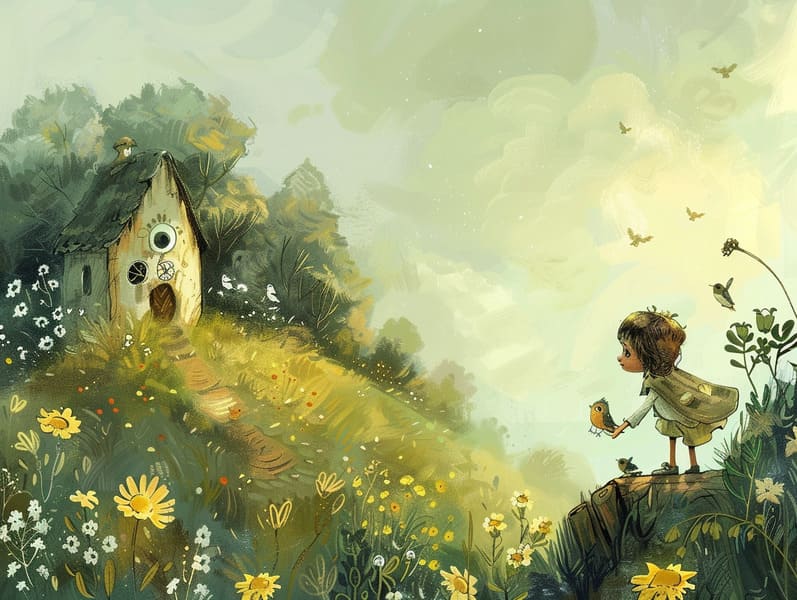The Birth of Traditional Fairy Tales with Their Unending Radiance.
The Birth of Traditional Fairy Tales with Their Unending Radiance.
Blog Article

Fairy tales for kids have ancient roots. These stories have been spoken from one generation to the next ages before they were ever written down. They emerged from a variety of backgrounds, including Middle Eastern traditions. They were initially told among mature audiences, often carrying themes and messages reflective of the societal norms and beliefs of the time.
The Grimm brothers, Jacob and Wilhelm Grimm, were among the first to assemble many of these beloved stories. Their compilation, "Grimm's Folk Tales," included tales like "The Little Glass Slipper," "Hansel and Grethel," and "Snow-White and Rose-Red," which have since become pillars in the world of traditional fairy tales. Similarly, the Danish author's fanciful stories, such as "The Little Mermaid," and "The Duckling that Could," have floated into hearts worldwide, solidifying their place in the pantheon of classic fairy tales.
Though they are old, classic fairy tales remain as pertinent as ever, especially as kids' bedtime tales. These enchanting tales are now available in numerous formats, including vividly illustrated books, magical animations, and digital fairy tales.
Their enduring popularity can be attributed to several fascinating points:
Life Lessons: Classic fairy tales often present important moral lessons. Narratives like "The Tale of the Boy Who Cried Wolf" teach the merit of integrity, while "The Race of the Tortoise and the Hare" illustrate the traits of determination and unpretentiousness. These stories offer little ones clear distinctions between correct and incorrect, forming their moral compass in a gentle yet significant way.
Compassion and Insight: Fairy tales frequently portray characters facing struggles and tests, fostering audiences to feel with their struggles and celebrate their triumphs. For instance, "Beauty and the Beast" shows us the benefit of seeing beyond looks to recognize the true character of a person, cultivating tenderness and knowledge.
Cultural Comprehension: Many timeless fairy tales are rich in the cultural contexts from which they emerged. Understanding these stories can provide captivating looks into different societies, enhancing a sense of global awareness and knowledge.
Fantasy and Innovation: The whimsical elements in timeless fairy tales—spells and potions—encourage children’s creativity. These tales move readers to otherworldly realms, stimulating inventive dreams and a sense of astonishment that stays a lifetime.
Classic fairy tales are not only delightful but also pedagogical. They work as fascinating tools in developing various cognitive and affective skills in children. When fairy tales are told out loud, they advance verbal development by teaching new word meanings and detailed sentence structures. This practice also promotes listening skills and attentiveness, as the young concentrate deeply, enthusiastic to see what happens next.
Furthermore, conversing about check here the themes and characters of old fairy tales can strengthen thought processes and analytical skills. Little ones are taught to discover patterns, guess what will happen, and get cause and effect. These discussions also boost young ones say their thoughts and feelings, nurturing their emotional intelligence.
In today’s technological age, the presence of online storybooks has made these fairy tales more obtainable than ever. Internet sites and software make available wide arrays of Grimm's fairy tales that can be enjoyed or listened on anytime, anywhere. Fairy tales read aloud are particularly prevalent, providing an charming way for young ones to enjoy these magical stories. Voice books and read-out-loud videos move characters and settings to life, often supplemented by mesmerizing music and instrumentals that amplify the story journey.
The lasting appeal of ancient fairy tales lies in their ability to change to present eras while continuing with their underlying messages. Contemporary reimaginings of these stories often present more representative figures and modern settings, making them understandable to today’s audience. However, the core values of daring, kindness, and fair-mindedness remain unchanged, continuing to resonate with audiences of all ages.
Traditional fairy tales also offer a sense of calm and knowability. They deliver up a structured narrative with a straightforward beginning, middle, and end, often coming to a close with the culmination of conflicts and the triumph of virtue over vice. This certainty can be relieving for young readers, extending a sense of security in an fluid world.
Timeless fairy tales continue to fascinate and edify new generations, maintaining their grace and significance in modern society. As nighttime stories for kids, they make accessible a perfect blend of captivation and insight, fostering moral values, empathy, and creativity. The proliferation of online storybooks and the in demand status of fairy tales told out loud secure that these old tales remain acquirable to new generations.
By protecting and telling these stories, we continue to pay tribute to the rich tapestry of legends and cultural heritage. Whether you are browsing a richly illustrated book, browsing a digital library, or listening on an read-aloud story, the beauty of famous fairy tales is always within reach. These tales point out of the everlasting magic of storytelling and its ability to unite us across eras and regions.
If you are reading a gorgeously illustrated book, exploring a virtual collection, or listening on an read-aloud story, the delight of ancient fairy tales is always within reach.
These fairy tales remind us of the unwavering essence of narratives and its ability to gather us across centuries and lands, weaving a spell that fascinates and enlightens alike.